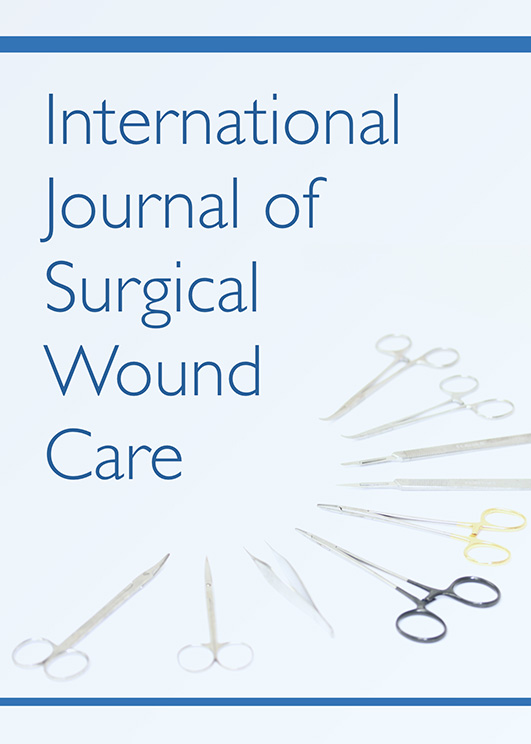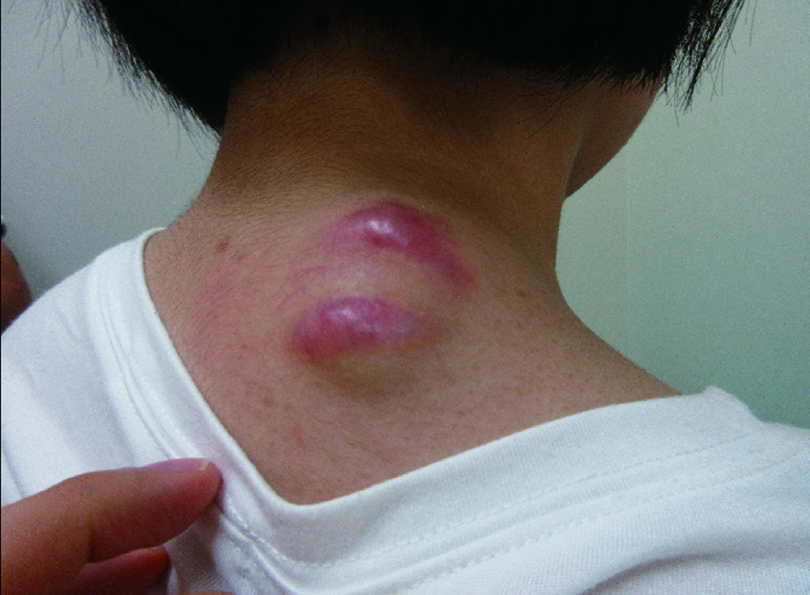Introduction: In general, exposed bone wounds are covered with flaps. If the wound is small, skin grafting with perifascial areolar tissue can be performed for resurfacing; however, it is not suitable for large bone-exposed wounds exceeding 5 cm in length.
Methods: Six patients underwent skin grafting for bone-exposed wounds at our medical center between 2014 and 2020. In all cases, a suitable local flap donor site could not be found around the wound, and a suitable donor vessel to anastomose the free flap was difficult to find. After a sequestrectomy, slit artificial dermis was applied to the wounds, and basic fibroblast growth factor was sprayed. Ointment-impregnated gauze was applied to the wounds. After confirming the creation of a suitable wound bed, skin grafting was performed.
Results: In all cases, after skin grafting, the exposed bone wounds were closed. Four cases were due to extensive burns, one was due to malignant tumor resection, and one was due to exposed bone after injury. For burn injuries, suitable skin flap donors were difficult to find. Three cases of bone exposure involved the skull, and the rest involved the anterior surface of the tibia. Four cases required split-thickness skin grafts (including two mesh skin grafts), and two required full-thickness skin grafts. Covering a wound after skin grafting took 3 weeks to 3 months (median, 1 month), which is much longer than the time taken when using a skin flap.
Conclusion: Even for exposed bone wounds with poor blood circulation, a good wound bed can be created by the combination of artificial dermis and bFGF, and wound closure can be achieved by skin grafting. Bone-exposed wounds should be closed early using a skin flap. However, when the patient’s general condition is poor or when temporary closure is difficult due to the unavailability of a suitable donor, wound closure by skin grafting is a simple and useful treatment option, although it takes a long time.
Case 2. Skin grafts for exposed skull wounds due to burn injury.
Fullsize Image
(a) The patient had deep dermal burns > 45% of the total body surface area (TBSA) to the head, neck, anterior chest, and both upper extremities. The photograph was taken 1 and a half months after the injury, showing an 18 × 12 cm skull-exposed wound on the back of the head. (b) First surgery was performed 1 month after the injury. After sequestrectomy of the necrotic skull cortex, the artificial dermis was applied. (c) Second surgery was performed 1 and half months after the injury. The initial bone-exposed wound was a mixture of granulationdeveloped and bone-exposed parts. (d) After re-sequestrectomy of the part of the skull cortex not covered with granulation, the artificial dermis was applied again. A patch graft was applied to the part where the granulation tissue was formed. (e) Photograph taken 3 months after the injury. The exposed skull surface is mostly covered with granulation. (f) View of the third resurfacing surgery 3 months after the injury, showing the mesh graft applied on the new granulation. (g) Photograph taken at 6 months post-injury showing the exposed skull completely resurfaced with skin grafts.
抄録全体を表示






